12. 1844: James Polk (Democratic) vs. Henry Clay (Whig)
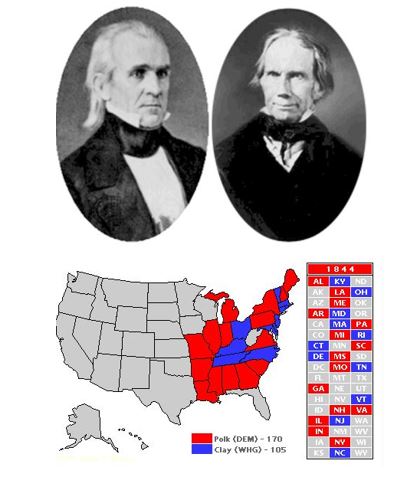
Electoral Vote: 170 – 105
Popular Vote: 49.5% – 48.1%
Running on a platform of Manifest Destiny, or expanding the United States from Atlantic Ocean to Pacific Ocean, Tennessee Governor James Polk was able to edge one of the most important political figures of his time, Henry Clay. Polk won the election by virtue of holding onto New York and its 36 electoral votes by a mere 5,106 votes. Had New York swung to Clay, he would have won the election instead.
Image Source: President Elect, Raymond History
11. 1976: Jimmy Carter (Democratic) vs. Gerald Ford (Republican)
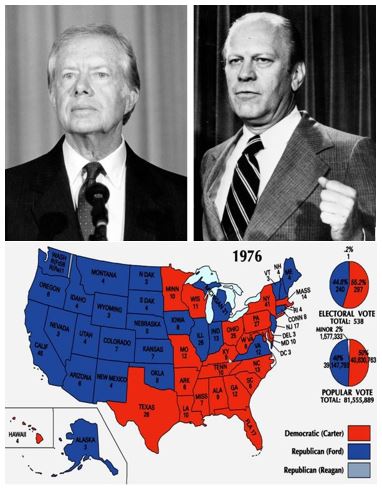
Electoral Vote: 297 – 240
Popular Vote: 50.1% – 48.0%
Georgia Governor and relative outsider, Jimmy Carter, pulled off a narrow win over President Gerald Ford. Ford had replaced the resigned Spiro Agnew as Vice President, and then took over for President Richard Nixon following his resignation. For ensured his place in the history books with this loss, becoming the only man to ever serve as President without ever being elected as President or Vice President.
Image Source: Youtube, Baltimore Sun
10. 1968: Richard Nixon (Republican) vs. Hubert Humphrey (Democratic)

Electoral Vote: 301 – 191
Popular Vote: 43.4% – 42.7%
In a battle of Vice Presidents, former Vice President (and 1960 election loser) Richard Nixon defeated sitting Vice President Hubert Humphrey with a decisive Electoral College win. The popular vote margin, however, was much more narrow. In fact, Humphrey would likely have won the popular vote if third party segregationist candidate, George Wallace, had not siphoned off 9.9 million votes in the heavily Democratic South.
9. 1888: Benjamin Harrison (Republican) vs. Grover Cleveland (Democratic)
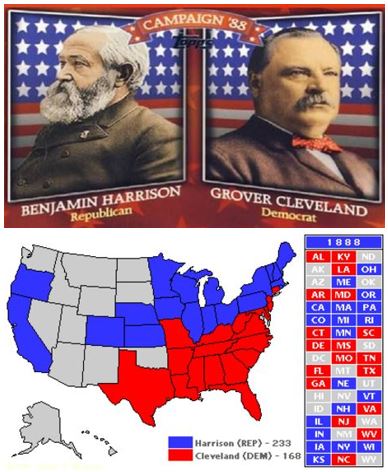
Electoral Vote: 233 – 168
Popular Vote: 47.8% – 48.6%
Indiana Senator Benjamin Harrison, the grandson of President William Henry Harrison, held on to beat President Grover Cleveland in the Electoral College despite losing the popular vote. It was just the 3rd instance in United States history where the popular vote winner did not win the presidency. Cleveland’s loss in his home state of New York by just 15,000 votes proved to be the decisive margin, as the state’s 36 electoral votes would have swung the election. Feeling that he had been wrongfully beaten, Cleveland ran again in 1892, winning a second term.
Image Source: President Elect, Henry’s Home
8. 2004: George W. Bush (Republican) vs. John Kerry (Democratic)
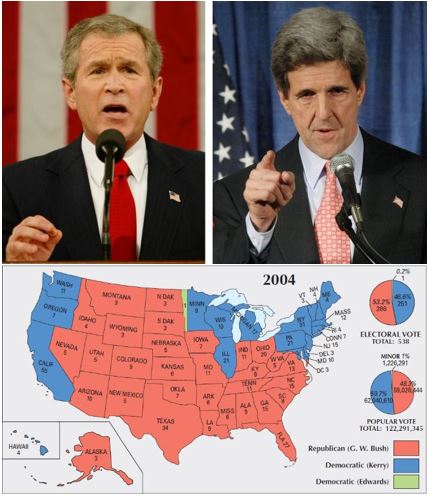
Electoral Vote: 286 – 251
Popular Vote: 50.7% – 48.3%
Coming off of one of the most controversial elections in United States history (and a later member on this list), George Bush earned a popular vote majority and a narrow Electoral College victory to win a second term in office. Ohio proved to be the decisive state, with Bush holding on through a late night count to win the state’s 20 electoral votes and the election.
Image Source: Southern Methodist University, Periodic Table of the Presidents
7. 1916: Woodrow Wilson (Democratic) vs. Charles E. Hughes (Republican)
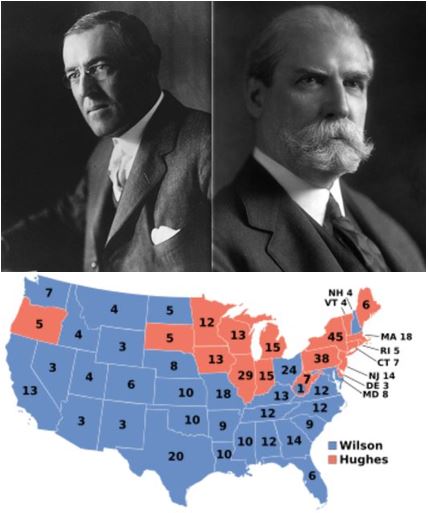
Electoral Vote: 277 – 265
Popular Vote: 49.2% – 46.1%
President Woodrow Wilson combined a decisive popular vote margin with the narrowest electoral vote margin of the 20th century to earn a second term as president. The election came down to the state of California, with Wilson earning the state’s 13 electoral votes by just 3,600 votes. Had Hughes flipped the state, he would have won the election despite the wide popular vote deficit.
Image Source: Wikipedia, deadpresidents
6. 1884: Grover Cleveland (Democratic) vs. James Blaine (Republican)
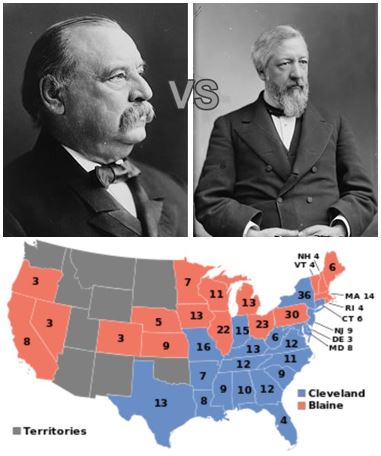
Electoral Vote: 219 – 182
Popular Vote: 48.9% – 48.3 %
New York Governor Grover Cleveland edged out Republican Senator James Blaine with tight margins in both the Electoral College and the popular vote. Just as it would four years later, the election came down to Cleveland’s home state of New York. The governor held on by just 1,151 votes to earn the state’s 36 electoral votes and the presidency.
Image Source: Wikipedia, yesteryearsnews
5. 1960: John Kennedy (Democratic) vs. Richard Nixon (Republican)
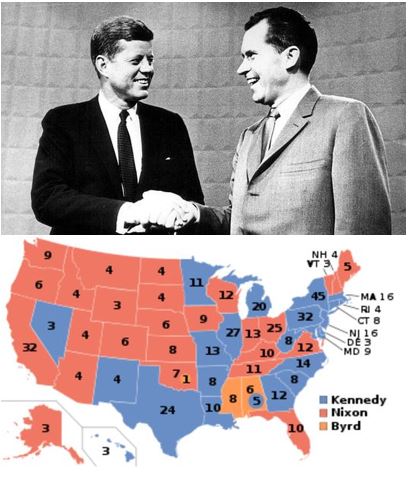
Electoral Vote: 303 – 219
Popular Vote: 49.7% – 49.6%
Senator John Kennedy defeated Vice President Richard Nixon in the second narrowest popular vote margin of all-time. Thanks to key wins in Texas and Illinois, Kennedy won the electoral vote comfortably. However, after 68 million votes were cast, Kennedy only won the popular vote by a mere 112,000 votes.
Image Source: Wikipedia, Steinbeck Now
4. 2016: Donald Trump (Republican) vs. Hillary Clinton (Democratic)
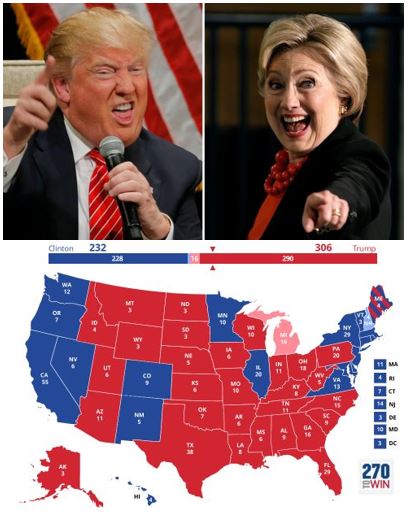
Electoral Vote: 306 – 232*
Popular Vote: 47.5% – 47.7%*
*Results still pending
In one of the most surprising elections in American history, businessman and complete political outsider Donald Trump stunned former Secretary of State Hillary Clinton with a clear electoral vote margin. Despite the large discrepancy, Clinton won the popular vote over Trump by 0.2%. She ran up big margins in populous California and New York, but lost narrowly across the Midwest, falling in Michigan by 0.3%, Wisconsin by 1%, and Pennsylvania by 1.2%. While results are still pending, it seems that Clinton’s margin may expand as California’s vote continues to be counted.
Image Source: 270towin, Newsweek
3. 1880: James Garfield (Republican) vs. Winfield Hancock (Democratic)
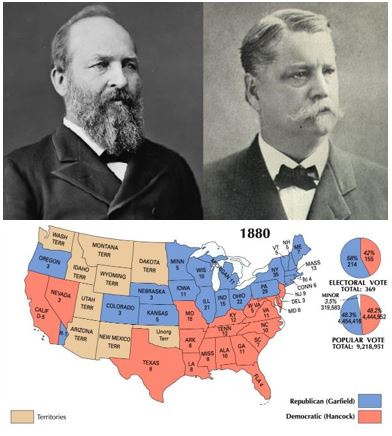
Electoral Vote: 214 – 155
Popular Vote: 48.27% – 48.25%
In the closest popular vote margin in United States history, Congressman James Garfield beat General Winfield Hancock to win the presidency. While Garfield had a solid margin in the Electoral College, the popular vote was unbelievably close. Garfield ended up with only 1,898 more votes than Hancock out of more than 9.2 million ballots cast, a margin of 0.02%. Garfield was assassinated after serving less than a year in office.
Image Source: SlideGo, beardedcats
2. 1876: Rutherford Hayes (Republican) vs. Samuel Tilden (Democratic)
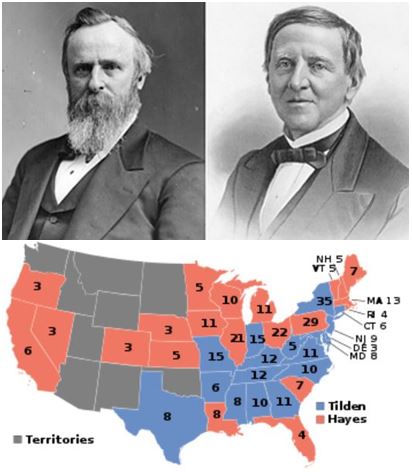
Electoral Vote: 185 – 184
Popular Vote: 47.9% – 50.9%
In the most contentious election in United States history, Rutherford B. Hayes defeated Samuel Tilden by a single electoral vote to earn the presidency, despite losing the popular vote by 3%. In an election rampant with fraud on both sides, the electoral votes of four states were left undeclared after an initial count, leaving Tilden with a 184-165 advantage. A special commission was appointed to resolve the 20 votes, and they voted down party lines to give all 20 to Hayes, winning him the presidency 185-184. To appease furious Democrats, Republicans agreed to end Reconstruction and withdraw federal troops from the South.
1. 2000: George W. Bush (Republican) vs. Al Gore (Democratic)

Electoral Vote: 271 – 266
Popular Vote: 47.9% – 48.4%
In the closest election in United States history, Governor George W. Bush scraped out the presidency over Vice President Al Gore by the narrowest of margins. Bush earned only one electoral vote more than the minimum 270 for victory, despite losing the popular vote by over half a million votes. The election came down to Florida’s 25 electoral votes, with Bush earning a 537-vote win in the state. The election was not called for over a month as recounts dragged on in Florida, not ending until the Supreme Court ordered Florida to stop the recounts. The 537 votes separating a Bush presidency from a Gore presidency is the smallest in American history.
Image Source:
